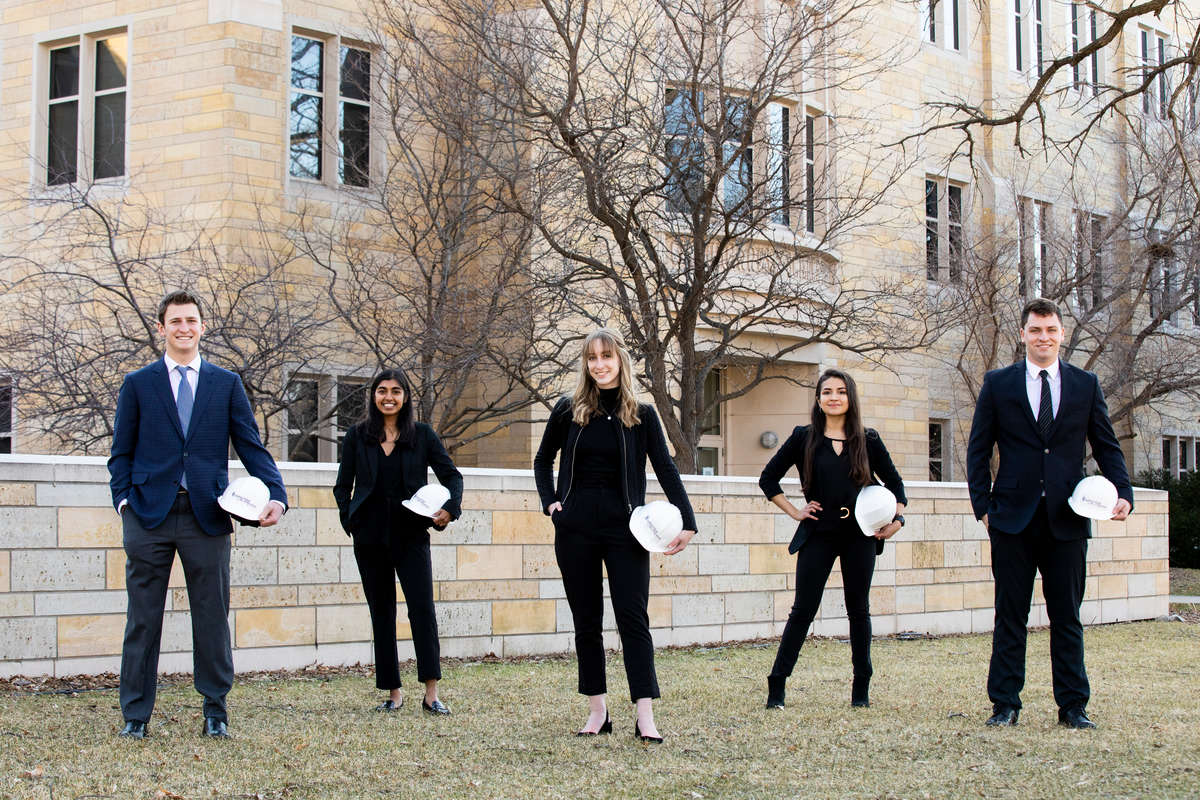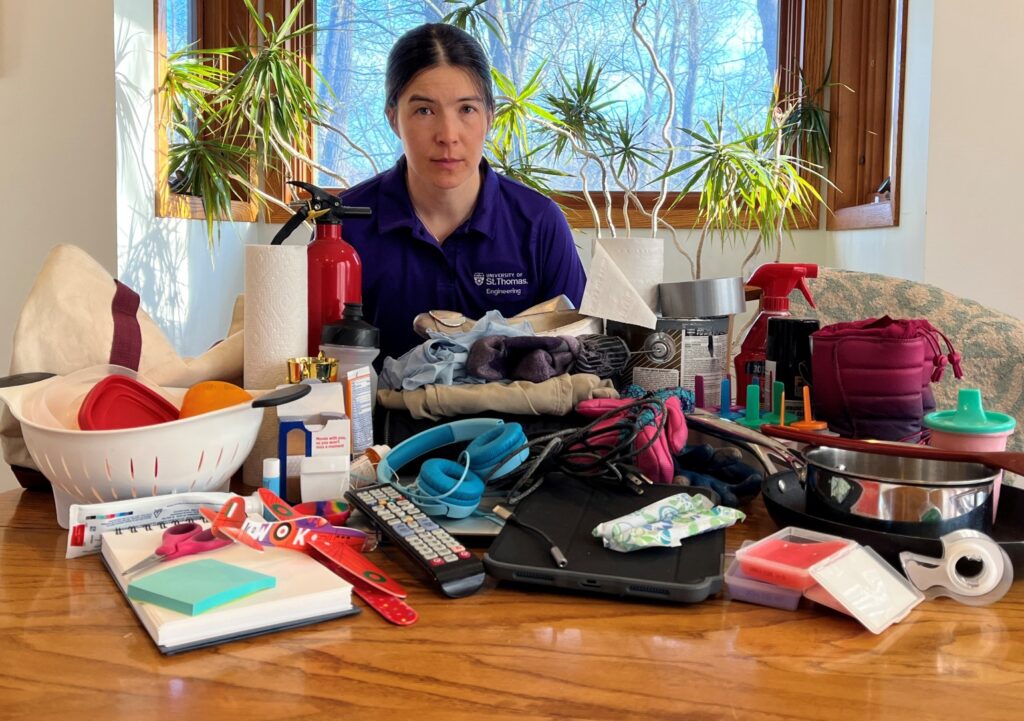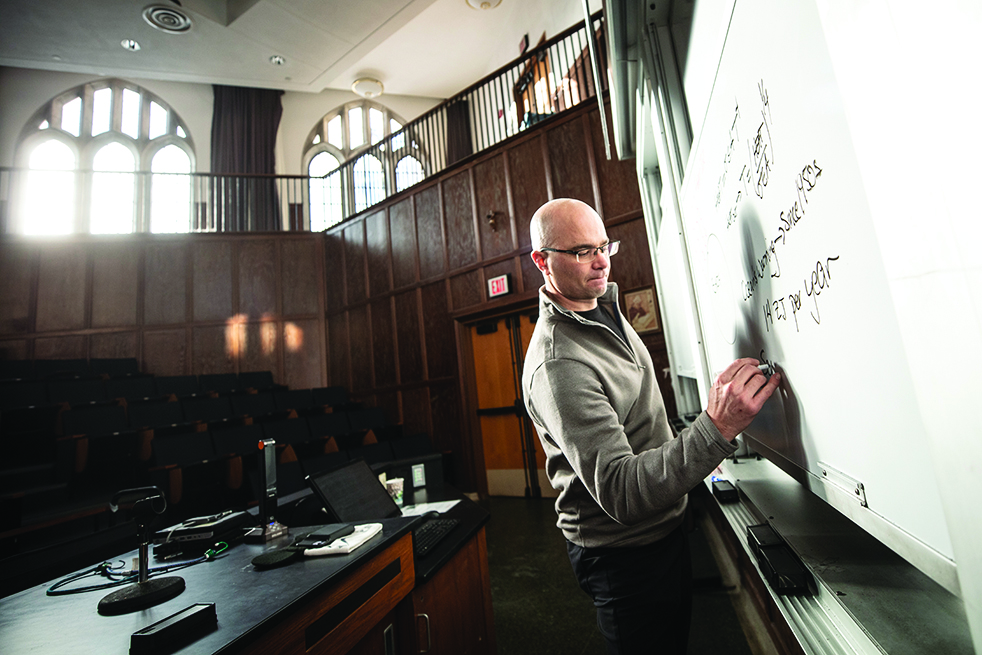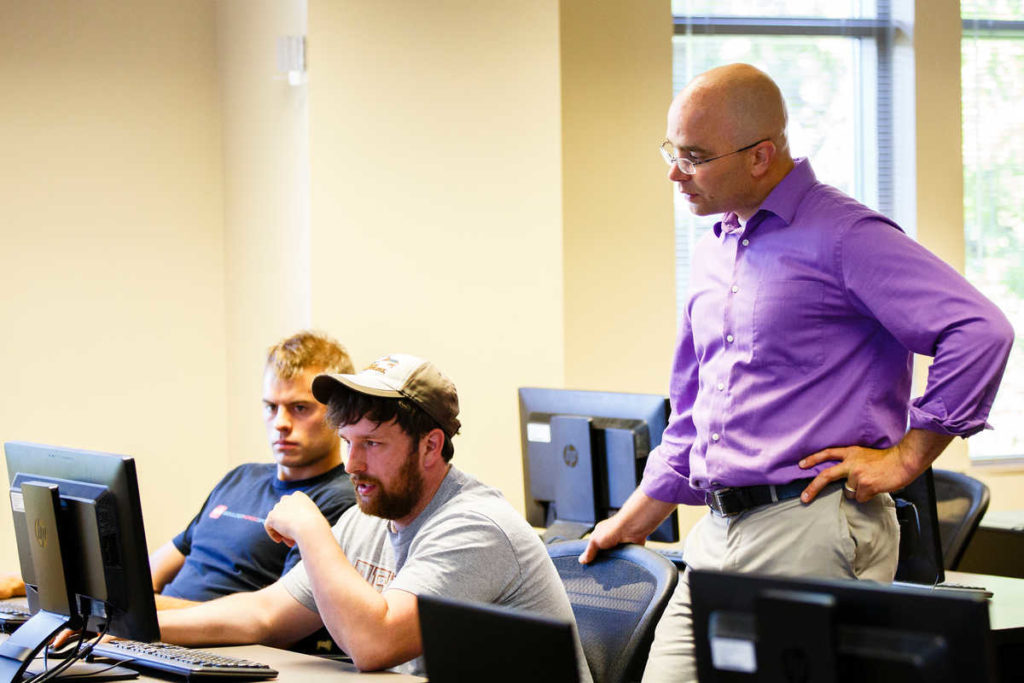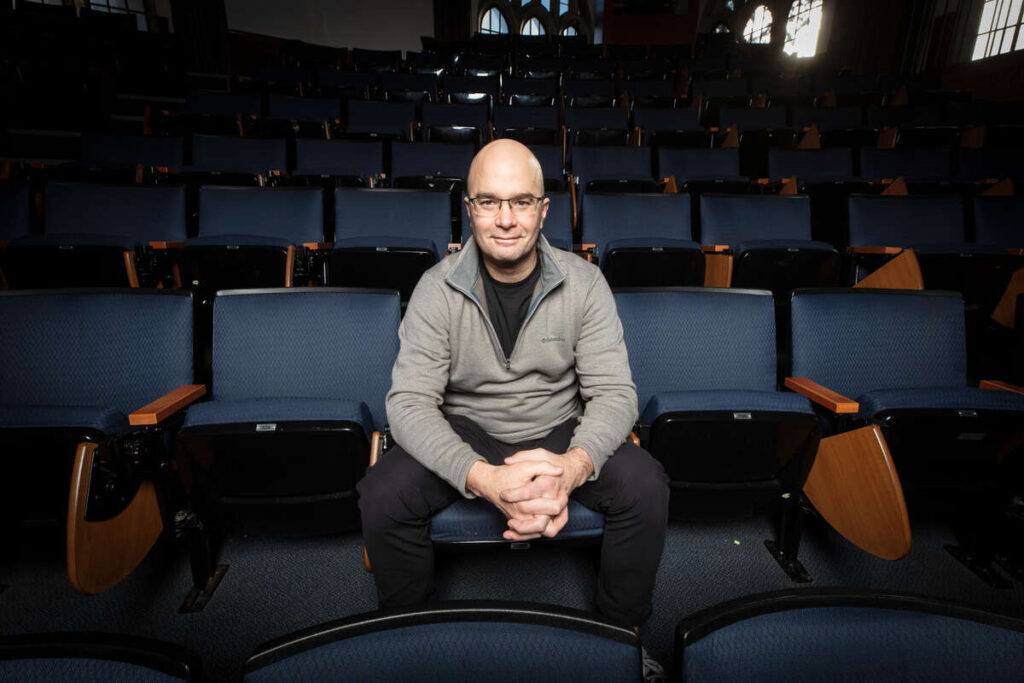A wireless system to charge a medical implant through the skin, the reconstruction design for a car and pedestrian bridge, and a safety sensor system to detect and respond if children are left in a hot car were all projects dreamed up and designed by St. Thomas School of Engineering students.
There were 32 teams of engineering students who partnered this school year with nonprofits and corporate giants like 3M, Medtronic and Graco to solve an industry issue. They virtually presented their final designs to curious, remote onlookers on May 7.
“Each year, more than 30 companies and nonprofit organizations engage our students with real world engineering challenges. They ask, ‘Is this possible?’ and let the teams go to work,” said Don Weinkauf, dean of the School of Engineering. “In several months, these seniors transformed their ideas from an industry problem to a working solution.”
The students, under the guidance of faculty mentors, worked in multidisciplinary teams of four to six, leveraging their specialties ranging from computer and manufacturing to electrical and mechanical engineering.
“Working on a project with multiple different types of engineering specialties,” senior Peter Elliot ’21 explained, “helped to better solve complicated problems.”
Here’s a look at a few of the 2020-21 School of Engineering Senior Design Clinic projects that would have a direct impact on someone’s quality of life.
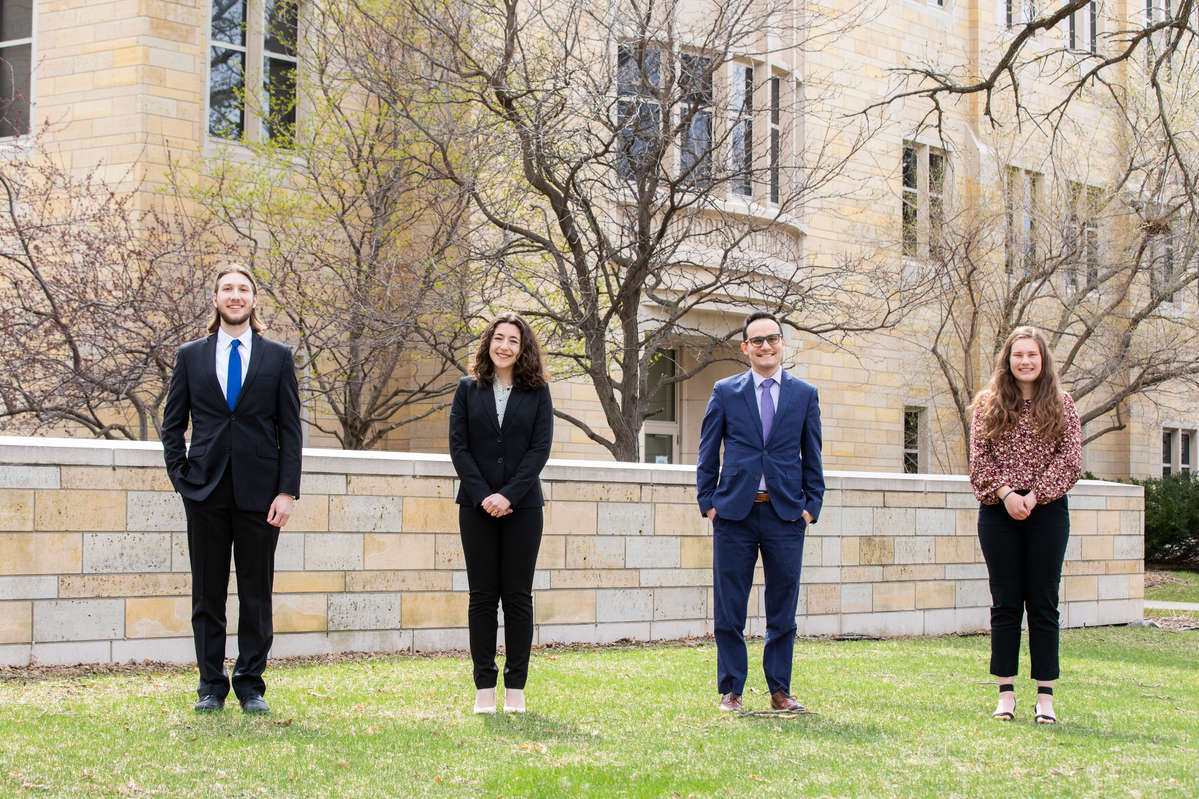
The School of Engineering spring senior design team of Peter Elliott, Rachel Farah, Luis Benavides and Mara Simon created a prototype called "Sensor System for Heat-Related Tragedies."
Safety Sensor to Save Children’s Lives
One team of students engineered a device to help prevent children from dying of heatstroke after being left or becoming trapped in a car. In 2019, a record 53 children died of vehicular heatstroke, and the National Highway Traffic Safety Administration said the number has increased in recent years.
Tasked with this sobering challenge, Elliot and his teammates Rachel Farah ’21, Luis Benavides ’21 and Mara Simon ’21 designed what they called a “Sensor System for Heat-Related Tragedies.” Working under a list of design constraints, the team created a prototype that used temperature, motion and weight sensors to detect whether a child or vulnerable adult had been left in a hot car. If an occupant was in danger, the device would trigger a lifesaving, battery-operated response.
“The goal of this prototype was to save children's lives, Simon, an electrical engineering major said. “I think I'll take away from this project the importance of engineering products and the impact they can have on the lives of people.”
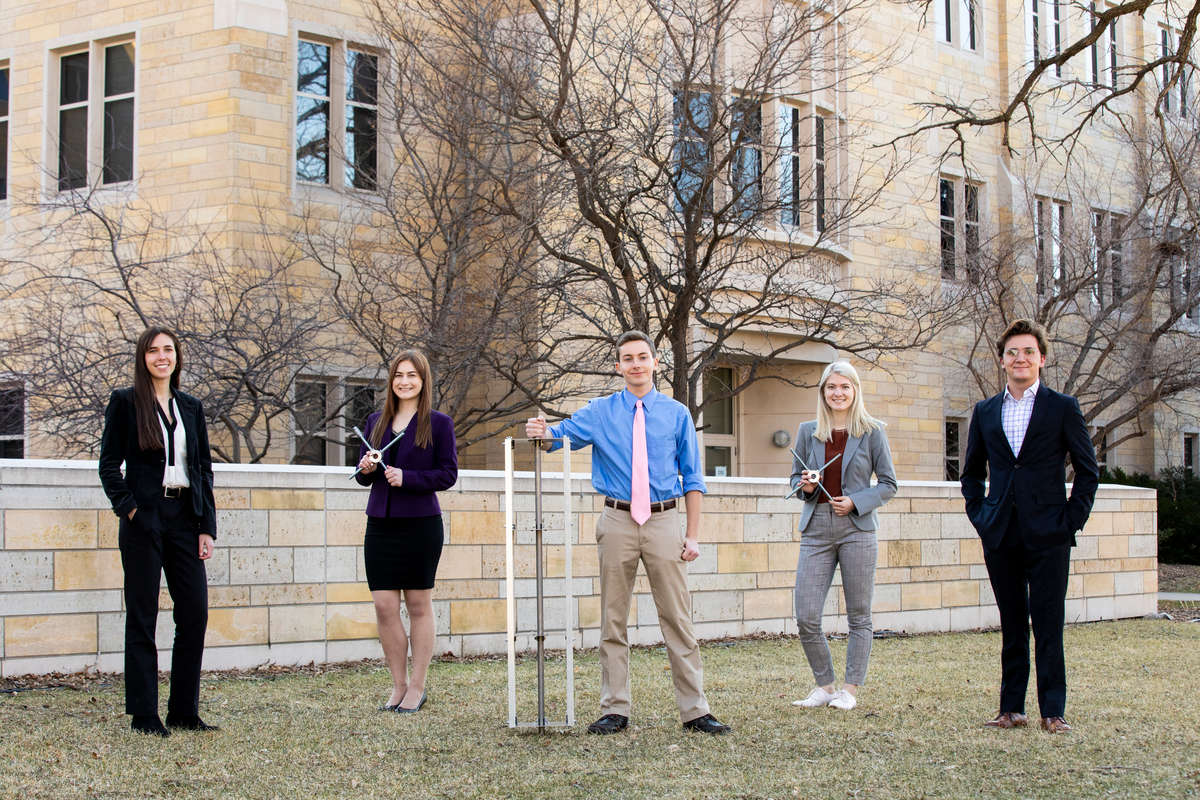
The School of Engineering spring senior design team of Rylee Mory, Maria Baklund, Rob Kopas, Serena Holte and Charlie Johnson designed a critical component for quinoa farming equipment.
Changemaking Projects Transform Farming
St. Thomas is an Ashoka U Changemaker Campus, a global network of 150 colleges and universities reenvisioning the role of higher education in society as major drivers of social impact. Several senior design projects have been officially designated as changemaking projects because they reduce waste or improve resources.
One is a greenhouse monitoring system to help farmers in harsh climates grow food year-round. Their device collects environmental metrics such as temperature, humidity, wind speed, rain, and solar irradiance, inside and outside the greenhouse.
Another team of seniors designed a critical component of a piece of farming equipment for small communities in Peru, which produces half of the world’s supply of quinoa. Their machine improvements added precision in the manufacturing process and required less maintenance between machine uses.
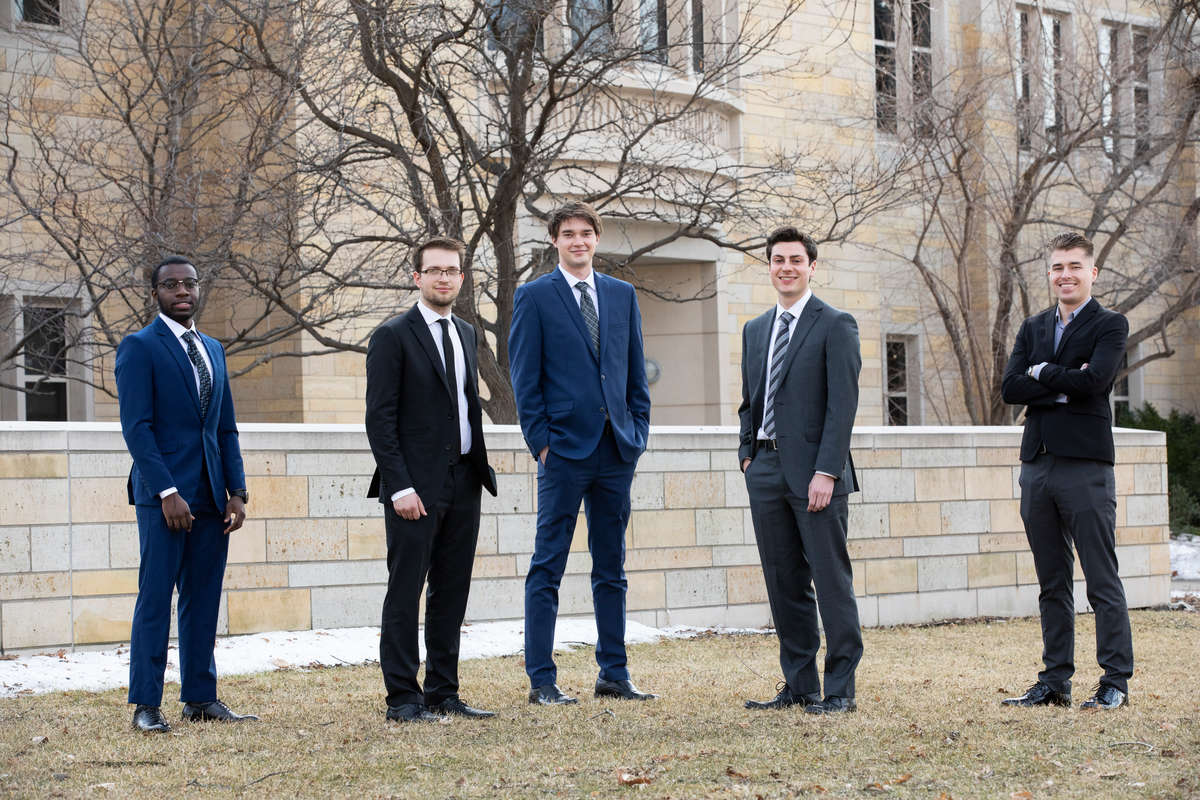
The School of Engineering spring senior design team of Eric Eguida, Vlad Vechar, Byron Van Hollen, Mitchell Allen and Wyatt Melloy teamed up with Medtronic to develop a implant charging system.
Medical Devices Increase Patient Comfort
One team sought to reduce the physical demand of caregivers of bedridden patients in nursing homes and in-home care. They created the “automatic repositioning bed” that rotates a patient 180 degrees to their other side to help prevent bed sores.
A project requested by Medtronic for another team sought ways to wirelessly recharge the battery in a neurostimulator implant located under the skin of a patient. These devices are used to disrupt pain signals to the brain, thereby reducing the amount of pain the user feels.
Student Achievements Go Beyond the Classroom
Weinkauf said these senior design projects are only part of the students’ accomplishments as engineers.
“Through their hard work, they have developed into truly remarkable engineers,” Weinkauf said. “They hold the powerful combination of skills and character that will, without question, make the world a better place as they go forward from St. Thomas.”
He added: “We are grateful for the support of the local and global sponsoring companies and organizations from that have committed their funds, equipment, and time, to make this a truly great experience for our students.”
A description of each University of St. Thomas School of Engineering Senior Design Clinic project is available in the 2021 guide.
